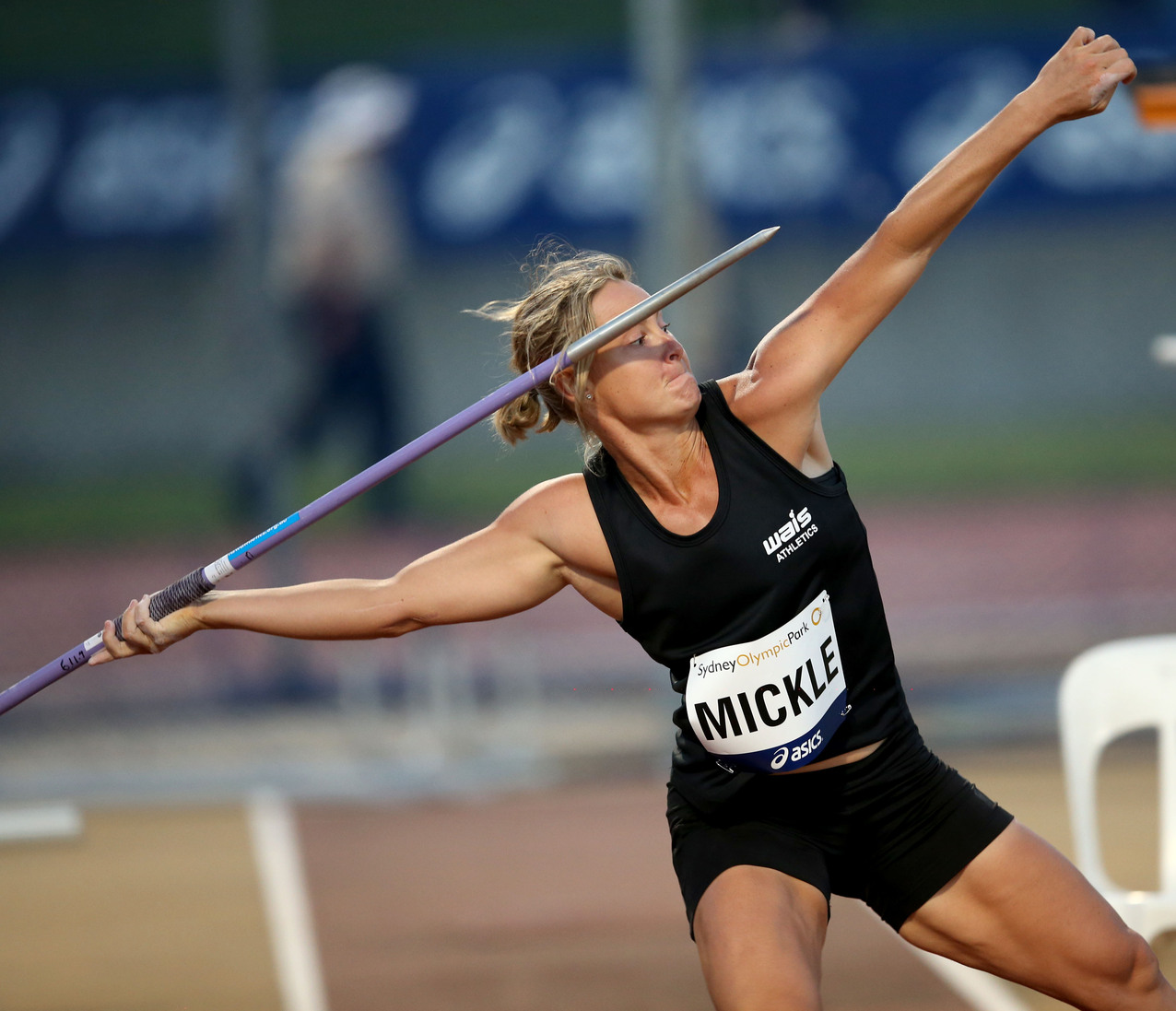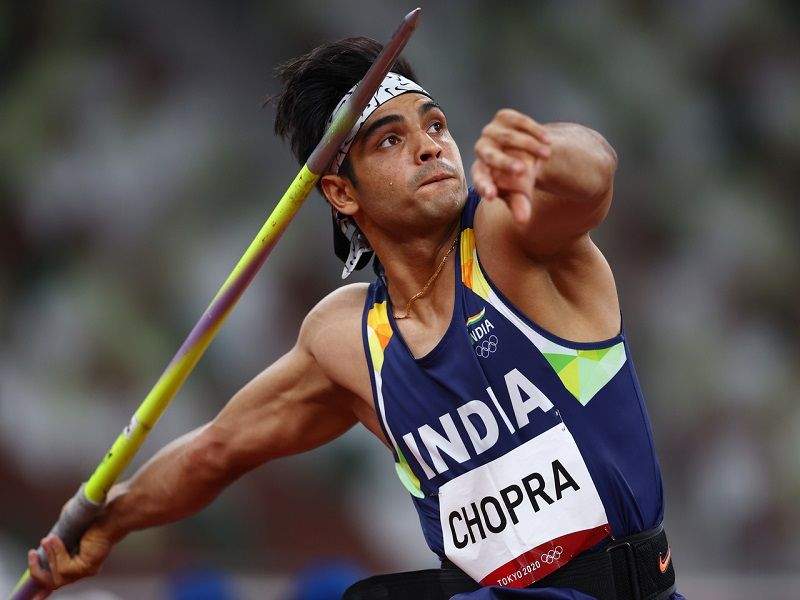Techniques and Strategies in Men’s Javelin

The javelin throw is a demanding athletic event that requires a combination of strength, speed, and technical skill. A successful throw involves a series of coordinated movements, from the initial grip to the final release, all aimed at maximizing distance. This section will delve into the techniques and strategies employed by javelin throwers to achieve optimal performance.
Grip and Hold, Men’s javelin
The grip on the javelin is crucial for control and power during the throw. The athlete grasps the javelin with their dominant hand, placing their index and middle fingers around the javelin’s grip, while the thumb rests on top. The other hand provides support, ensuring a firm hold and a balanced grip. The grip should be firm but not too tight, allowing for a natural release.
Run-Up
The run-up is the phase where the athlete builds momentum and prepares for the throw. It’s a controlled and purposeful sprint, designed to maximize speed and generate kinetic energy. The run-up typically covers a distance of 30-40 meters, with a gradual increase in speed as the athlete approaches the throwing point. The final few steps are crucial for transferring momentum to the javelin.
The Throw
The throw itself is a complex sequence of movements involving the entire body. The athlete uses their momentum from the run-up to initiate a powerful throw, transferring energy to the javelin. The throwing action can be broken down into several distinct phases:
Plant
The plant is the moment the athlete’s throwing foot lands, initiating the throwing motion. The foot should land firmly and confidently, providing a stable base for the throw.
Backswing
The backswing involves bringing the javelin back behind the body, building tension and potential energy. The athlete’s arm and shoulder rotate backward, while the core muscles engage to maintain stability.
Forward Swing
The forward swing is a powerful and controlled movement, transferring the built-up energy to the javelin. The athlete’s arm and shoulder rotate forward, propelling the javelin forward with maximum force.
Release
The release is the final stage of the throw, where the javelin is launched into the air. The athlete’s hand should be relaxed, allowing the javelin to leave the hand with minimal resistance. The release angle, the angle at which the javelin leaves the hand, is critical for achieving maximum distance.
Optimal Throwing Technique
The optimal javelin throwing technique emphasizes a smooth and coordinated sequence of movements, maximizing efficiency and power. Key aspects include:
- Body Alignment: The athlete’s body should be aligned in a straight line during the run-up and throw, ensuring a balanced and powerful transfer of energy.
- Core Engagement: The core muscles play a vital role in maintaining stability and transferring energy during the throw. Strong core engagement helps control the body’s movements and prevents unnecessary rotation.
- Arm and Shoulder Rotation: The throwing arm and shoulder should rotate smoothly and powerfully, generating the force needed to propel the javelin forward.
- Release Angle: The release angle is crucial for maximizing distance. The optimal release angle is typically around 45 degrees, although this can vary depending on individual factors.
- Release Point: The release point, the point at which the javelin leaves the hand, should be as high as possible to maximize the throw’s trajectory. This often involves extending the throwing arm fully at the point of release.
Strategies for Maximizing Throw Distance
Javelin throwers employ various strategies to maximize throw distance. These strategies focus on factors such as momentum, angle, and release point:
- Momentum: Building momentum during the run-up is essential for generating power in the throw. The athlete should focus on maintaining a smooth and controlled acceleration throughout the run-up, maximizing their speed and kinetic energy.
- Angle: The release angle is critical for achieving maximum distance. The optimal release angle is typically around 45 degrees, although this can vary depending on individual factors. The athlete should experiment with different release angles to find the one that yields the best results.
- Release Point: The release point should be as high as possible to maximize the throw’s trajectory. This often involves extending the throwing arm fully at the point of release, ensuring the javelin leaves the hand with maximum height and forward momentum.
Visual Representation of a Successful Javelin Throw
A successful javelin throw involves a series of coordinated movements, each contributing to the overall distance achieved. The following diagram illustrates the key elements of a successful throw:
[Image: A diagram illustrating the key elements of a successful javelin throw, showing the athlete’s stance, run-up, plant, backswing, forward swing, and release.]
The diagram shows the athlete’s body position at various stages of the throw, highlighting the importance of proper technique and body mechanics. The athlete’s body should be aligned in a straight line, with the core engaged to maintain stability. The throwing arm and shoulder rotate smoothly and powerfully, transferring energy to the javelin. The release point is high, maximizing the throw’s trajectory. By understanding and implementing these key elements, javelin throwers can optimize their technique and maximize their throw distance.
Notable Athletes and Achievements in Men’s Javelin

The history of men’s javelin is filled with extraordinary athletes who have pushed the boundaries of human performance. From the legendary Jan Železný to the modern-day giants of the sport, these athletes have captivated audiences with their power, precision, and unwavering determination. Their achievements have not only shaped the sport but also inspired generations of aspiring javelin throwers.
Impact of Legendary Athletes
The impact of legendary athletes like Jan Železný and Andreas Thorkildsen on the sport of men’s javelin is undeniable. Their dominance, combined with their innovative throwing techniques, transformed the sport and set new standards of excellence.
- Jan Železný: A true icon of the sport, Železný holds the world record for the men’s javelin throw with a remarkable distance of 98.48 meters. He is the only athlete to have thrown over 90 meters on multiple occasions, and his unparalleled dominance during the 1990s made him a household name. His signature “Železný grip” revolutionized javelin throwing, enabling him to generate incredible speed and power.
- Andreas Thorkildsen: A formidable competitor and a two-time Olympic champion, Thorkildsen’s legacy lies in his unwavering determination and consistent performance. He was known for his exceptional accuracy and ability to deliver consistent throws well over 80 meters. Thorkildsen’s throwing style, characterized by a smooth, fluid motion, inspired many aspiring javelin throwers.
Comparison of Throwing Styles
Javelin throwing styles have evolved over the years, with each athlete bringing their unique approach to the sport. This diversity in technique has resulted in a fascinating blend of power, precision, and artistry.
- Traditional Style: This style, often referred to as the “overhand throw,” involves a powerful, sweeping motion that utilizes the entire body to generate maximum force. Athletes like Steve Backley and Aki Parviainen have excelled in this style, showcasing remarkable power and accuracy.
- Modern Style: The modern style, pioneered by Jan Železný, emphasizes a more controlled and precise approach. This style prioritizes efficiency and technical accuracy, allowing athletes to generate tremendous speed and power with a streamlined motion.
Top 10 All-Time Men’s Javelin Throwers
The following table showcases the top 10 all-time men’s javelin throwers, highlighting their best throws and achievements.
| Rank | Athlete | Nationality | Best Throw (m) | Year | Notable Achievements |
|---|---|---|---|---|---|
| 1 | Jan Železný | Czech Republic | 98.48 | 1996 | 3-time Olympic champion, 4-time World champion, World record holder |
| 2 | Andreas Thorkildsen | Norway | 91.57 | 2006 | 2-time Olympic champion, 2-time World champion |
| 3 | Steve Backley | United Kingdom | 91.44 | 1990 | 1-time Olympic champion, 3-time World champion |
| 4 | Aki Parviainen | Finland | 91.31 | 1999 | 1-time World champion |
| 5 | Seppo Räty | Finland | 91.29 | 1988 | 1-time Olympic champion |
| 6 | Terence Stevens | United States | 91.26 | 1983 | 1-time World champion |
| 7 | Boris Henry | Germany | 91.20 | 1988 | 1-time Olympic champion |
| 8 | Kimmo Kinnunen | Finland | 91.02 | 1996 | 1-time Olympic champion |
| 9 | Raymond Hecht | Germany | 90.82 | 1986 | 1-time World champion |
| 10 | Tom Petranoff | United States | 90.32 | 1983 | 1-time World champion |
Men’s javelin is a sport of raw power and precision, a dance between strength and technique. It’s a reminder that sometimes, the most powerful throws come from a place of vulnerability, much like the lyrics in the song mama’s boy lyrics , which explore the complexities of dependence and the journey to self-reliance.
Just as the javelin soars through the air, so too does the athlete’s spirit, seeking to break free from the confines of expectation and reach for a new horizon.
Men’s javelin, a sport of power and precision, often evokes images of athletes with sculpted physiques, their throws a testament to dedication and strength. It’s a world away from the world of Hollywood, where relationships like that of hunter schafer and dominic fike capture the public’s imagination.
But even in the glamorous realm of entertainment, the spirit of competition and achievement is present, mirroring the drive of those who dedicate their lives to mastering the javelin.
